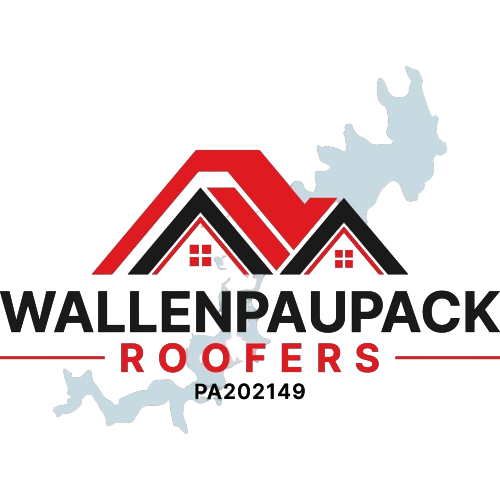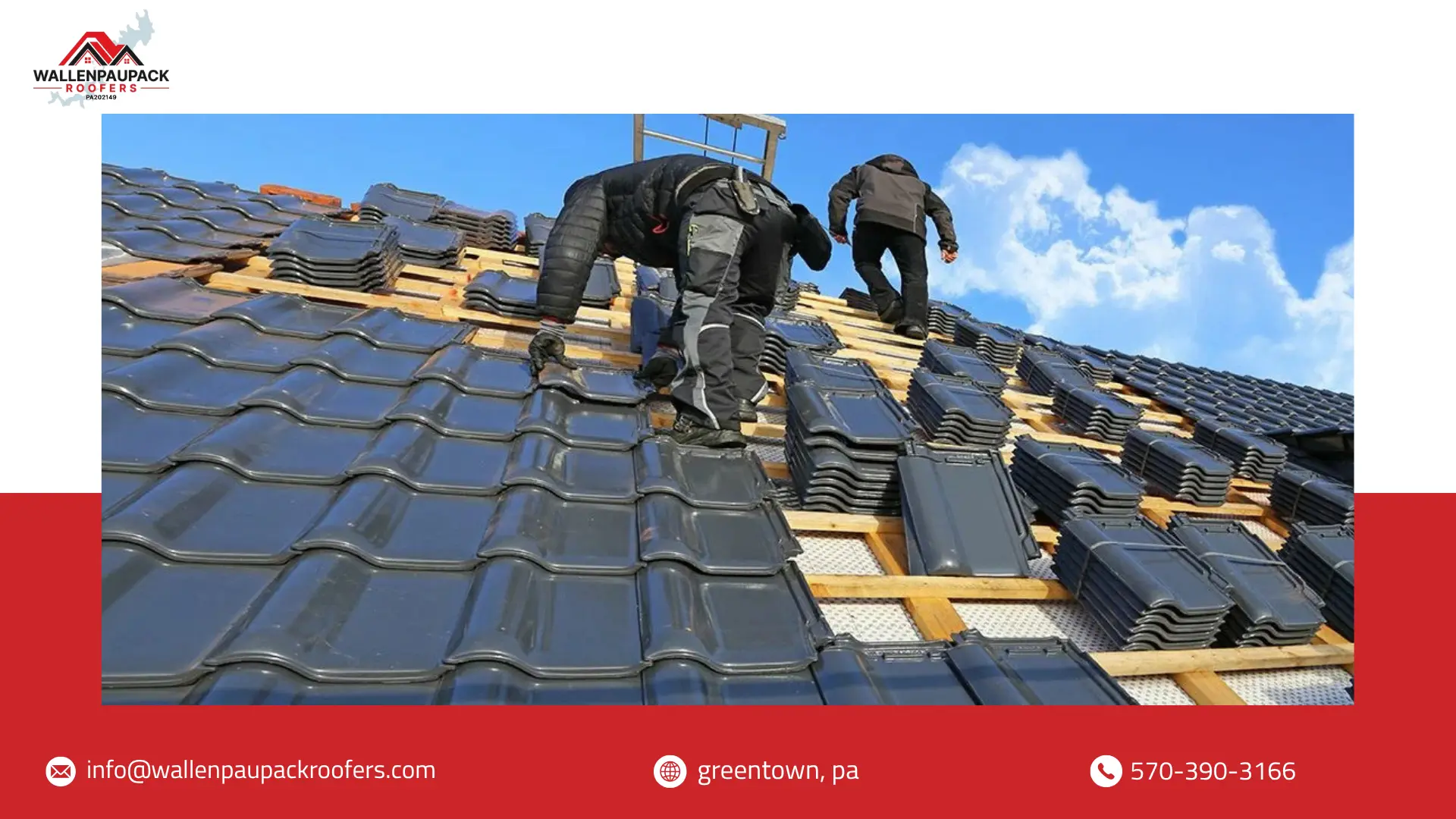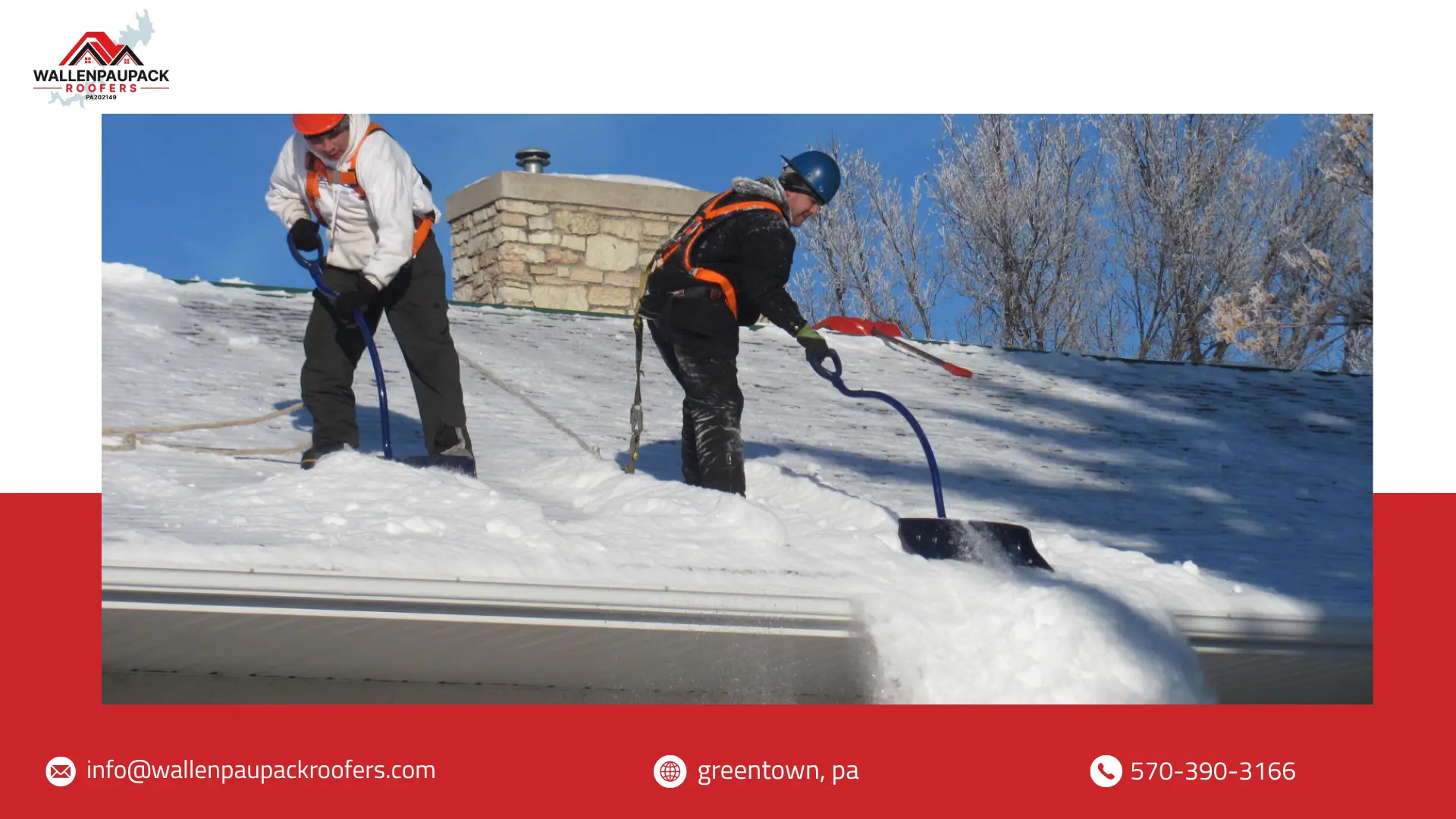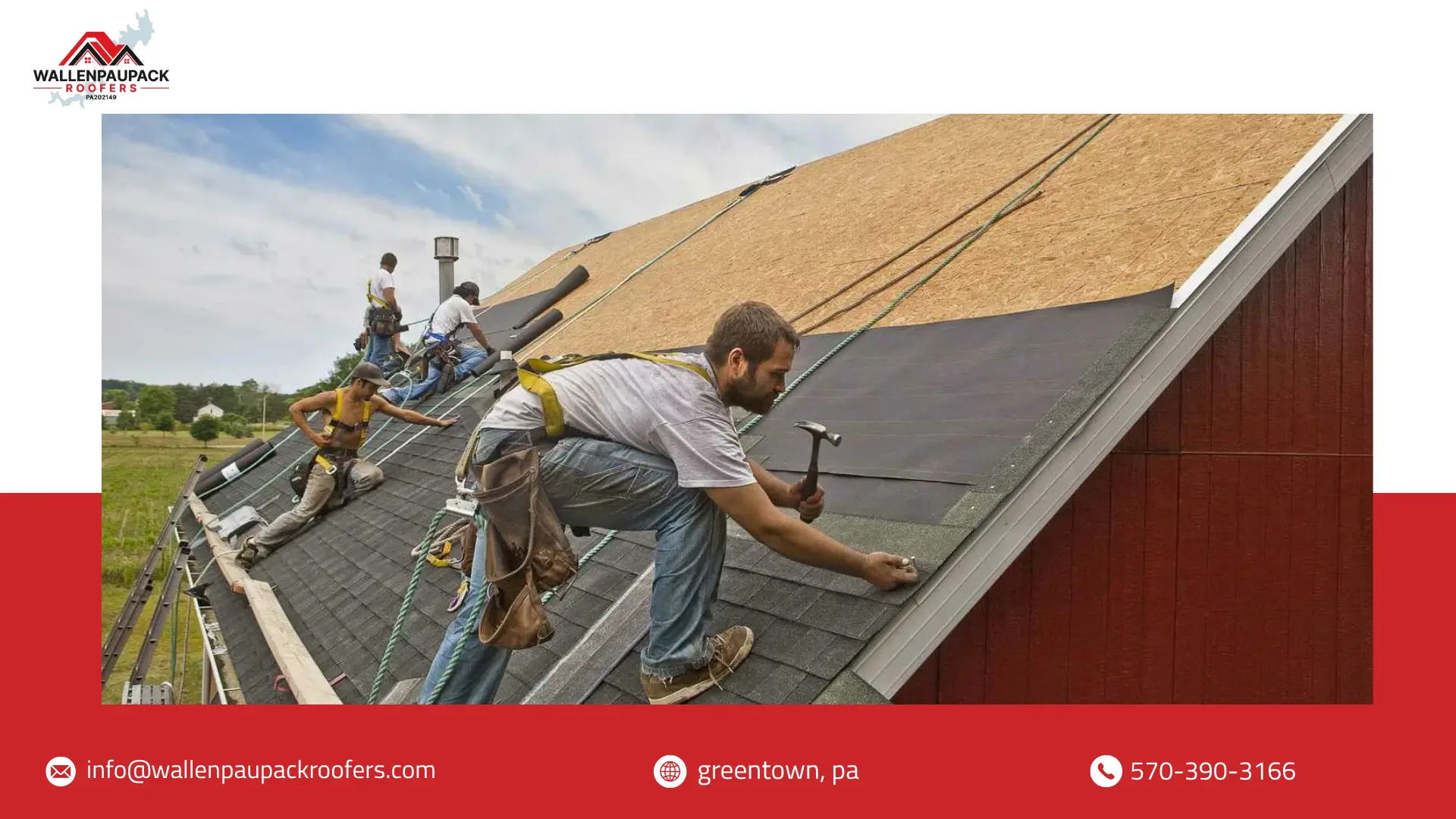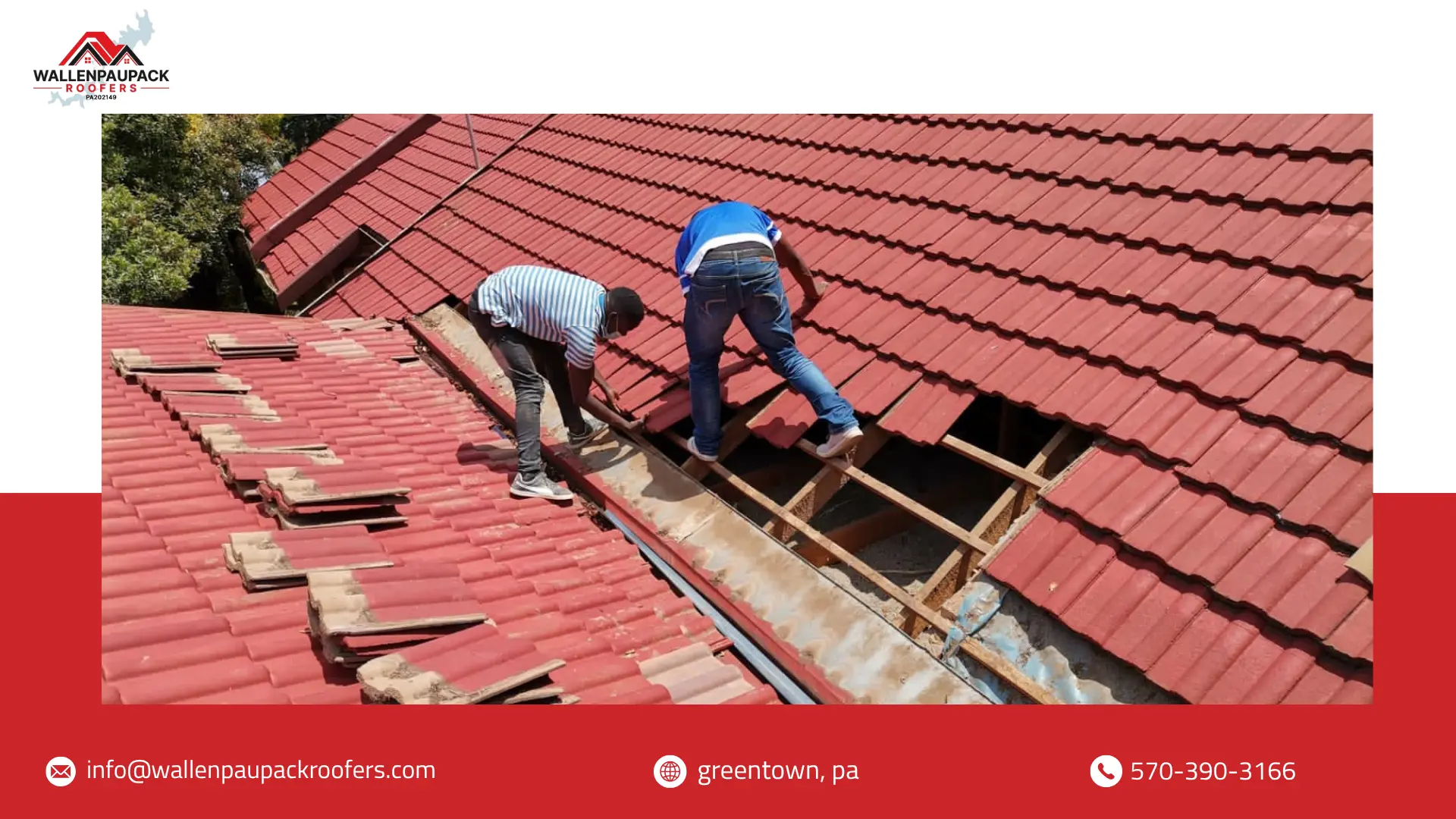Noticed a small leak after the last heavy storm? Or maybe your roof shingles look old, curled, or faded? These are often the first signs you need a new roof — subtle but serious warnings that your home’s main line of defense is starting to fail. The truth is, many homeowners wait too long to act, and what begins as a minor leak can quickly escalate into costly structural problems. Understanding the early roof damage warning signs helps you avoid bigger headaches down the road.
Recognizing when to replace your roof can save you thousands of dollars in future repairs. That’s why homeowners across Pennsylvania trust Wallenpaupack Roofers for accurate inspections, honest advice, and long-lasting roof replacements. We don’t just cover up problems — we rebuild your protection from the ground up, ensuring your home stays safe no matter the weather.
If you’ve started to wonder how long your roof will last or whether those dark streaks or missing shingles mean trouble, it’s time to pay attention. Knowing the signs you need a new roof early can prevent expensive water damage, mold growth, or sagging rafters later. Keep reading — here’s how to spot the warning signals before roof leaks and sagging cause permanent damage.
How Do You Know When It’s Time to Replace Your Roof?
Homeowners often ask, “What are the most common signs you need a new roof?” The answer depends on several factors — the roof’s age, the extent of visible damage, and how it performs after heavy rain or snow. In general, if your roof shows frequent leaks, missing shingles, or soft, spongy spots, it may have reached the end of its lifespan.
A key part of knowing when to replace your roof is acting early. Timing matters — waiting until leaks spread inside can turn a simple fix into a costly overhaul. Many homeowners ignore the roof deterioration signs until they notice water stains on ceilings or walls, but by then, the structural damage has already started.
A professional inspection from Wallenpaupack Roofers can help you identify the true signs you need a new roof, evaluate your roof’s condition, and decide whether a repair or full replacement is the smarter long-term investment.
👉 Schedule your professional roof inspection with Wallenpaupack Roofers today — before minor issues become major headaches.
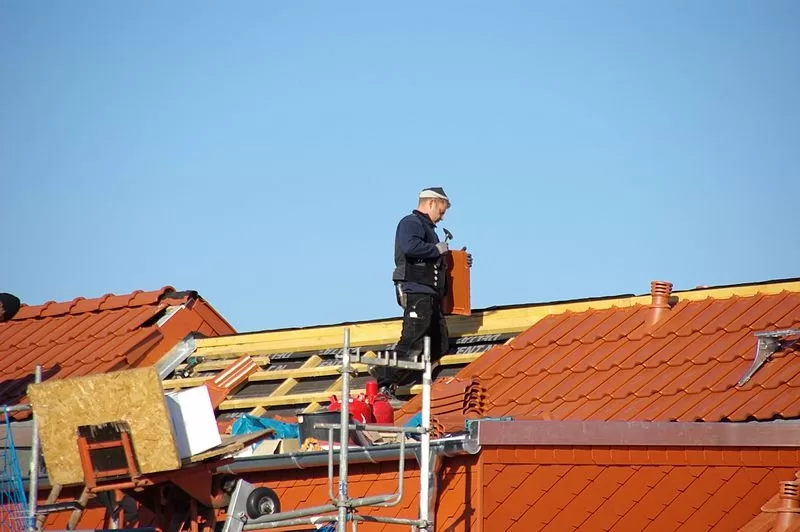
The Top Signs You Need a New Roof
Spotting roof deterioration signs early can make the difference between a simple repair and a full replacement. Here are the most important warning indicators our experts look for during a roof inspection.
Frequent Roof Leaks or Water Stains on Ceilings
If you notice damp spots, yellow stains, or bubbling paint on your ceilings, it means water is finding its way inside. Continuous leaks indicate the waterproof barrier under your shingles has failed. Left untreated, they can lead to rotten decking and insulation loss.
Missing, Cracked, or Curling Shingles
Shingles are your roof’s armor. When they start to crack, curl, or blow away, your home becomes exposed to weather damage. These are among the most obvious roof deterioration signs — and they rarely improve with simple patchwork.
Roof Sagging or Uneven Spots
Roof leaks and sagging go hand-in-hand. When the structure beneath your shingles begins to weaken, the roofline may dip or bow inward. This sagging can signal serious water damage or rotted support beams — both require immediate replacement.
Granules in Gutters and Downspouts
If you’re finding granules in your gutters, your shingles are breaking down. This erosion means they’ve lost their UV protection and are nearing the end of their lifespan.
Daylight Visible Through Attic Boards
During a sunny day, go into your attic. If you see light peeking through the boards, it’s a clear warning that your roofing material has thinned or separated, allowing water and air to pass through.
At Wallenpaupack Roofers, we perform full inspections using advanced tools to detect these early warning signs before they turn into structural issues.
Understanding Roof Age and Lifespan
Knowing how long a roof lasts helps you anticipate when replacement may be necessary. Most roofing materials have predictable lifespans — but exposure to Pennsylvania’s storms, snow, and seasonal humidity can shorten them significantly.
How Long Does a Roof Last?
On average:
- Asphalt shingle roofs: 20–25 years
- Metal roofs: 40–60 years
- Slate or tile roofs: 50–100 years
However, even the best materials break down over time. Poor ventilation, storm debris, and harsh freeze-thaw cycles all accelerate roof age deterioration.
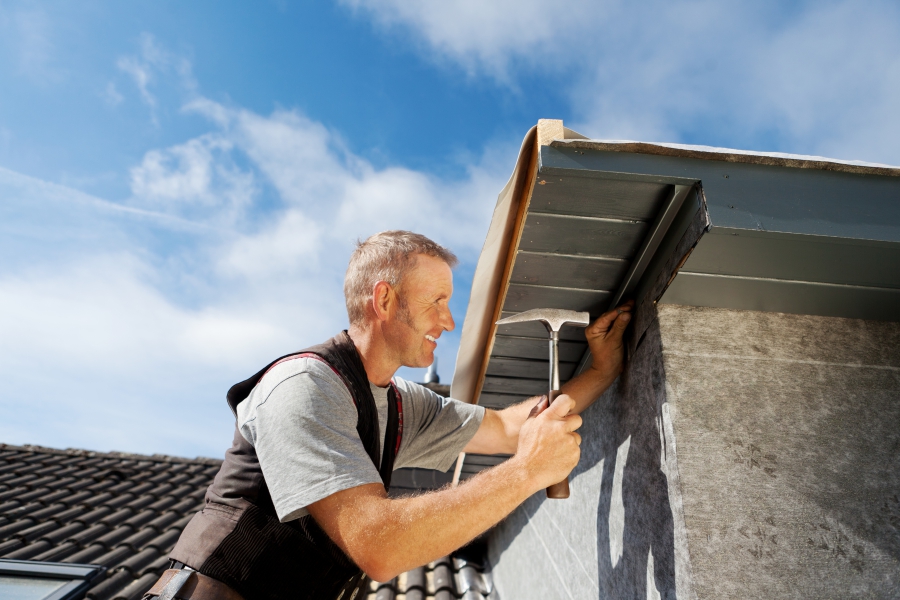
Roof Age Replacement Guide — When 20 Years Means It’s Time
Once your roof passes the 20-year mark, you’re in the “roof age replacement” zone. Even if no major leaks appear, microscopic cracks or loose flashing can develop underneath. These hidden vulnerabilities make older roofs much more likely to fail during storms.
Why Older Roofs Fail Faster After Storms or Heavy Rain
As materials dry out and adhesives weaken with time, older roofs lose flexibility. This makes them brittle and easily damaged by wind uplift, hail, and ice. A proactive replacement can prevent emergency repairs during Pennsylvania’s harsh weather seasons.
Roof Damage Warning Signs You Should Never Ignore
Some homeowners overlook subtle roof damage warning signs because they assume the issues are only cosmetic. But what appears harmless — such as moss or algae — can signal deep structural decay.
Persistent Mold, Moss, or Algae Growth
If you see green or black streaks on your shingles, it’s not just dirt. Moss and algae trap moisture, speeding up roof deterioration and damaging your underlayment.
Increased Energy Bills Due to Poor Roof Insulation
A damaged roof often leads to poor insulation. Warm air escapes during winter and seeps in during summer, forcing your HVAC system to work overtime. This inefficiency raises energy costs and reduces comfort indoors.
Soft or Spongy Spots When Walking on the Roof
A soft surface means the decking beneath your shingles has absorbed water. These weak spots can collapse under weight, posing a safety risk. Once structural integrity is compromised, roof replacement is the only safe solution.
Ignoring these roof damage warning signs can lead to long-term problems — including ceiling collapse, mold growth, and reduced property value.
Roof Leaks and Sagging — The Final Red Flags
When you start noticing roof leaks and sagging, your home has already entered the danger zone. These are some of the clearest and most urgent signs you need a new roof. Sagging often indicates severe internal water damage — meaning your rafters, sheathing, or support beams may be weakened or rotted. Once the structure begins to dip, your roof’s integrity is compromised and can no longer protect your home safely.
Leaks, on the other hand, are equally destructive. Even minor water intrusion can spread through insulation, drywall, and electrical systems — leading to mold growth, ceiling stains, and expensive repairs. At this stage, it’s not about when to replace your roof; it’s about acting before the damage becomes irreversible. Ignoring these roof deterioration signs can put your home’s safety and air quality at serious risk.
Professional Repair vs. Full Replacement — Which Is Right for You?
If your leaks are limited to a small section and the overall structure remains strong, a targeted repair might still be possible. However, if you’re dealing with widespread shingle failure, visible sagging, or interior mold, then a full roof replacement is the only long-term solution. Replacing your roof not only restores stability but also ensures your home is protected for decades ahead.
👉 If your roof shows these red flags or other warning signs you need a new roof, contact Wallenpaupack Roofers today. Our experts will conduct a thorough inspection, provide honest recommendations, and help you make the safest decision for your home and family.
Roof Inspection Tips from the Pros
Routine inspection is the best way to catch issues early and determine when to replace your roof before costly damage sets in.
How to Safely Inspect Your Roof from the Ground
Stand back and look for warped lines, missing shingles, or debris buildup. Use binoculars to check for cracks or curling. Never climb on your roof unless trained — it’s risky and can cause further damage.
Why Professional Roof Inspection Is Worth It
Professional inspections are critical to detect signs you need a new roof that might be hidden from plain sight. Experts like Wallenpaupack Roofers use infrared scanners and moisture meters to identify leaks and roof deterioration before they cause extensive damage. Our comprehensive inspection reports and recommendations are tailored to your home’s age and specific needs, giving you peace of mind.
Annual Roof Maintenance Plan for Early Detection
Enrolling in an annual roof maintenance plan is one of the best ways to catch signs you need a new roof early. Regular inspections before and after major storms allow for early intervention, which maximizes your roof’s lifespan and minimizes unexpected repairs. By addressing potential issues right away, you ensure your roof remains durable, energy-efficient, and ready to withstand seasonal weather changes.
These roof inspection tips ensure your roof stays durable, energy-efficient, and ready to face every season.
When to Replace Your Roof Instead of Repairing It
Many homeowners struggle with the decision between repairing and replacing their roof. When looking for signs you need a new roof, keep this rule of thumb in mind: if more than 25-30% of your roof is damaged or approaching the end of its lifespan, replacement is often the better investment. A new roof will provide long-term peace of mind and protect your home more effectively than ongoing repairs.
Comparing Long-Term Costs: Repairs vs. Replacement
While repairs seem like the more affordable option initially, they often lead to recurring costs, especially when leaks persist. If you’re seeing multiple leaks and signs you need a new roof, a full roof replacement is a wiser choice. Not only will it save you money in the long run, but it will also provide a renewed warranty and stronger protection for your home. Make sure to consider the long-term value of replacing your roof.
Benefits of Investing in a New Roof for Home Value & Safety
A new roof enhances curb appeal, increases resale value, and boosts energy efficiency. For families planning to stay long-term, investing in replacement now prevents costly emergency repairs later and secures peace of mind for years ahead.
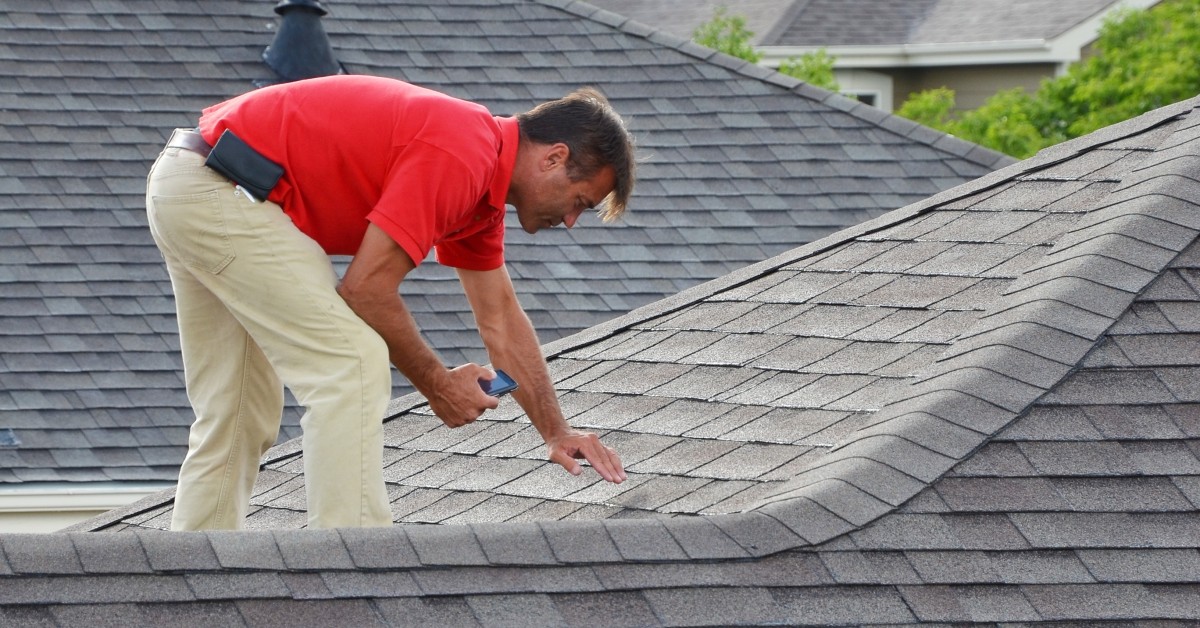
Why Homeowners Trust Wallenpaupack Roofers for Roof Replacement
When homeowners in Pennsylvania need answers about signs you need a new roof, they turn to Wallenpaupack Roofers for expert advice and dependable service. Our licensed and insured specialists bring years of local experience, advanced equipment, and top-quality materials to every project. We offer transparent, no-pressure quotes, and handle everything from inspection to installation with the utmost respect for your home.
👉 Get your free roof inspection today and find out if it’s time for a new roof with Wallenpaupack Roofers.
FAQ — Common Questions About Knowing When to Replace Your Roof
Q1. What are the most obvious signs you need a new roof?
The most common signs you need a new roof include frequent leaks, curling or missing shingles, visible daylight through attic boards, and noticeable roof sagging. These are all major roof damage warning signs that indicate your current system can no longer protect your home effectively.
Q2. How long does a typical roof last before replacement?
It depends on your materials, maintenance, and local weather. Asphalt shingles usually last 20–25 years, while metal roofs can exceed 50 years. However, once you start noticing roof deterioration signs — like granule loss, cracks, or soft spots — it’s smart to consult a professional to determine how long your roof will last and whether replacement is needed.
Q3. Can small leaks mean I need a new roof?
Yes — even small leaks can signal larger hidden issues beneath your shingles. What starts as a minor drip can develop into structural rot or insulation damage. If you’re seeing recurring leaks after rain or storms, these are early signs you need a new roof rather than just a quick repair.
Q4. How can I tell if roof sagging is dangerous?
Roof sagging is never something to ignore. It usually means the decking or internal supports are compromised. This is one of the most urgent roof deterioration signs, and if not addressed quickly, it can lead to structural failure. Always contact professional inspectors like Wallenpaupack Roofers to assess the severity and safety risks.
Q5. What’s included in a professional roof inspection?
A thorough roof inspection includes checking shingles, flashing, gutters, attic ventilation, insulation, and your roof’s structural integrity. Certified experts identify both visible and hidden roof damage warning signs, helping you catch small issues before they require full replacement.
Q6. Does replacing my roof increase home value?
Absolutely. A new roof doesn’t just enhance curb appeal — it significantly increases resale value, improves energy efficiency, and gives potential buyers peace of mind. For many homeowners, recognizing the signs you need a new roof early and replacing it on time becomes one of the best investments they can make.
Protect Your Home Before It’s Too Late
until roof leaks and sagging lead to costly, irreversible damage. Even the smallest roof deterioration signs can quickly escalate if left unchecked.
Call Wallenpaupack Roofers today to schedule your free professional roof inspection. Our certified experts know how to spot the early signs you need a new roof, assess your roof’s age and condition, and give you honest guidance on when to replace your roof. We don’t just fix problems — we prevent them, helping you protect your home before the next storm hits.
Remember, a strong, reliable roof isn’t an expense — it’s a long-term investment in your home’s safety and value.
👉 Book your free roof inspection today with Wallenpaupack Roofers — and keep your home safe, dry, and built to withstand any season.
